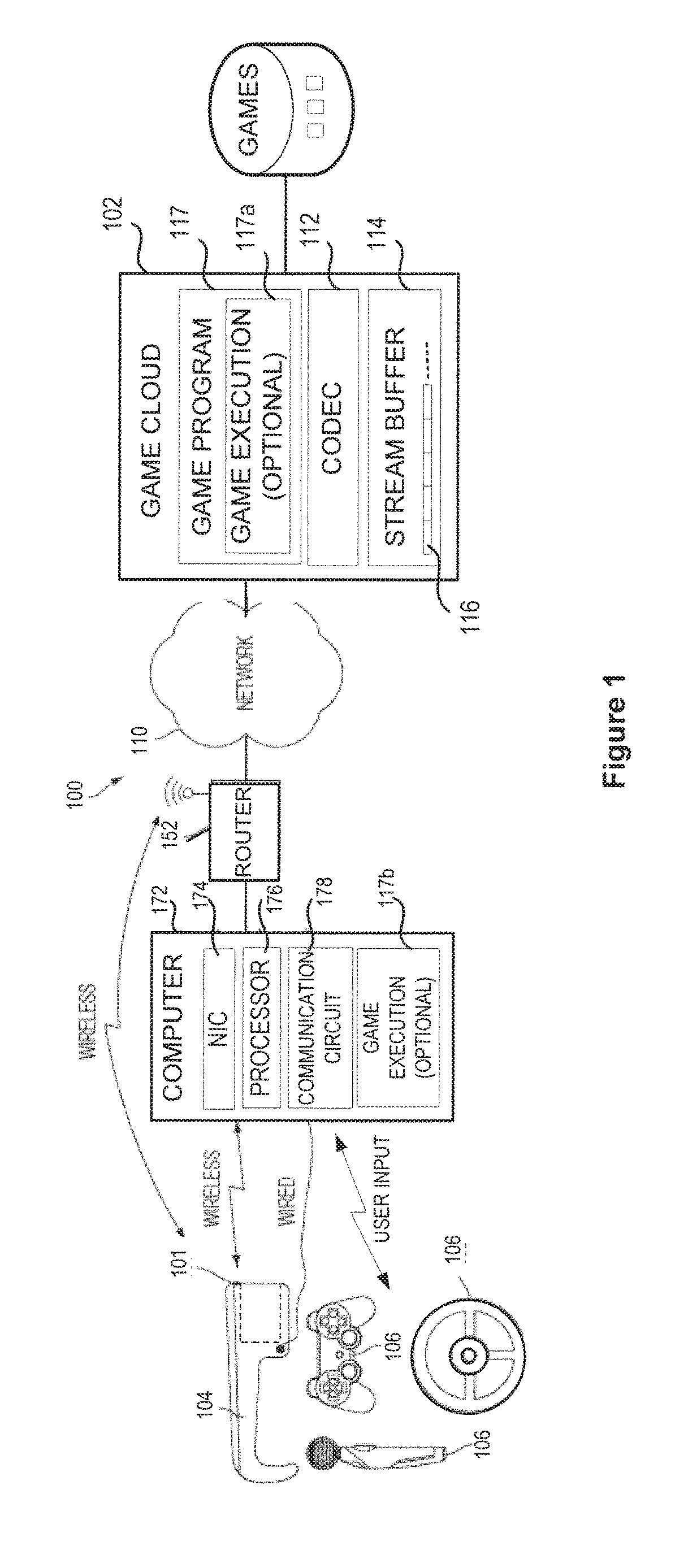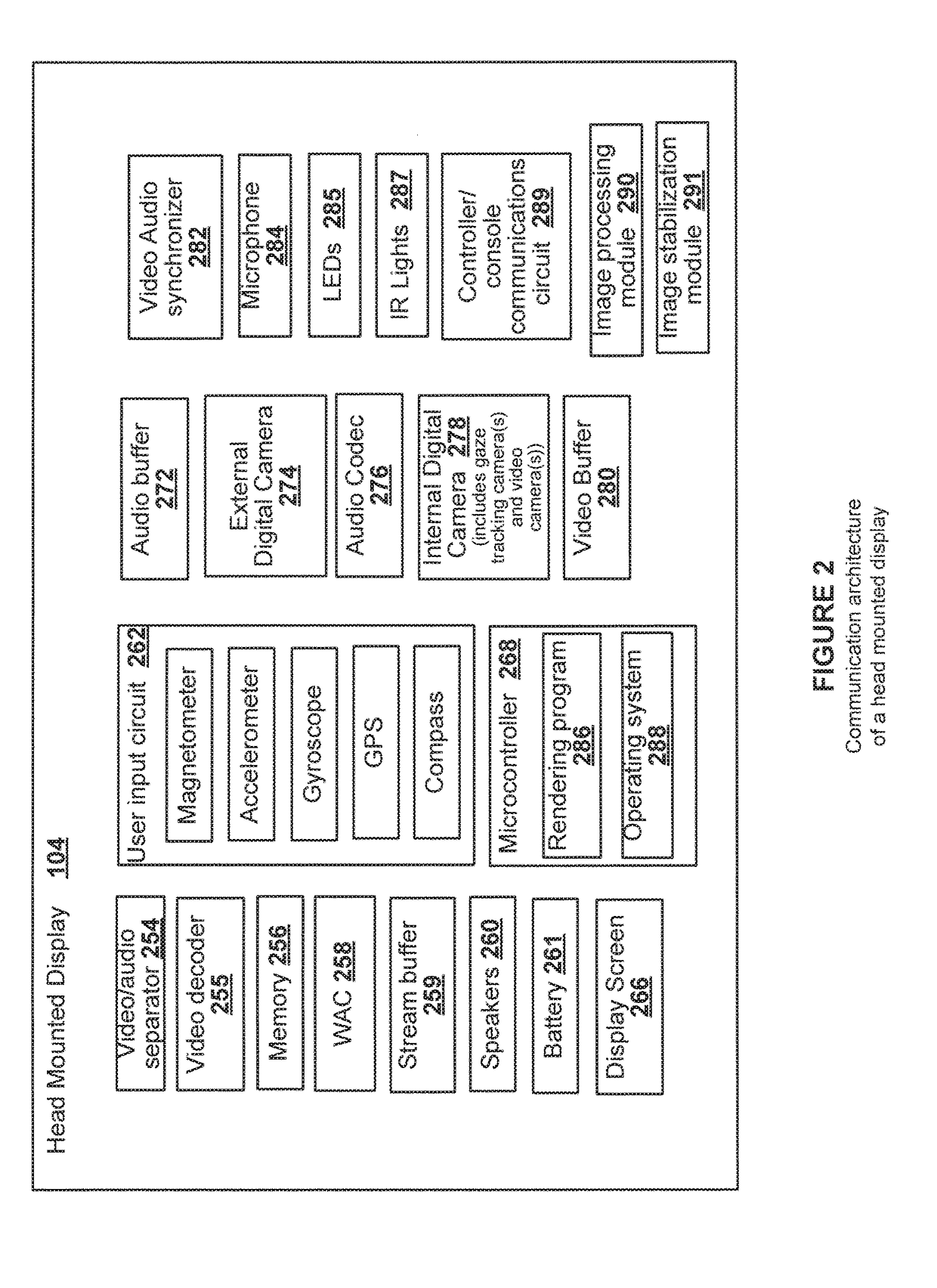HMD Transitions for Focusing on Specific Content in Virtual-Reality Environments
a virtual-reality environment and transition technology, applied in the field of systems and methods for presenting objects using augmented reality, can solve the problems that all the objects or details provided in the images of the real-world environment that are rendered at the display screen of the hmd may not be completely discernible by the player, and achieve the effect of satisfying immersive experience, sufficient clarity, and enhanced view of a vr scen
- Summary
- Abstract
- Description
- Claims
- Application Information
AI Technical Summary
Benefits of technology
Problems solved by technology
Method used
Image
Examples
Embodiment Construction
[0034]In the following description, numerous specific details are set forth in order to provide a thorough understanding of the present invention. It will be apparent, however, to one skilled in the art that the present invention may be practiced without some or all of these specific details. In other instances, well known process steps have not been described in detail in order not to obscure the present invention.
[0035]According to various implementations, a user wearing a head mounted display (HMD) may be presented with images of a real-world environment or a virtual reality (VR) scene on a screen of the HMD. The image of the real-world environment may be captured by one or more forward facing cameras of the HMD. Alternately, image from the VR scene may be part of a video game or may be a pre-recorded video that is transmitted from a computing device that is communicatively connected to the HMD. The various components (e.g., sensors, cameras, etc.,) in the HMD are used to detect ...
PUM
 Login to View More
Login to View More Abstract
Description
Claims
Application Information
 Login to View More
Login to View More - R&D
- Intellectual Property
- Life Sciences
- Materials
- Tech Scout
- Unparalleled Data Quality
- Higher Quality Content
- 60% Fewer Hallucinations
Browse by: Latest US Patents, China's latest patents, Technical Efficacy Thesaurus, Application Domain, Technology Topic, Popular Technical Reports.
© 2025 PatSnap. All rights reserved.Legal|Privacy policy|Modern Slavery Act Transparency Statement|Sitemap|About US| Contact US: help@patsnap.com



